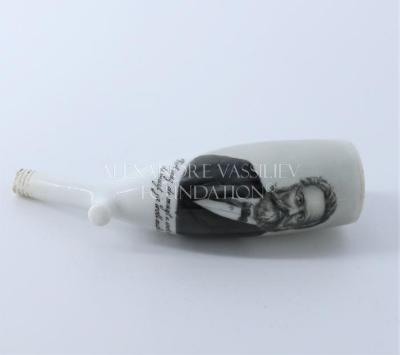Smoking pipe
Accessories
Inventory number
2019.10.16.6.AC.OT.C1870.DEDescription
Porcelain pipe with an engraved portrait of German novelist writer Fritz REUTER (7 November 1810 – 12 July 1874), born Heinrich Ludwig Christian Friedrich REUTER. At the bottom of the portrait written one of his quotes "Wer't mag, de mag't. Un wer't nich mag, de mag't jo woll nich mögen".Through time, the tobacco pipe became an object of much inventive ingenuity, and it varied as greatly in material as in form: wood, horn, bone, ivory, precious stone, precious metals, amber, glass, porcelain and clay being the materials employed in various forms. Of all these materials used in the fabrication of tobacco pipes in the last 400 or so years—including the humble corncob and the briar introduced in the mid-19th century—the porcelain is the singular pipe that failed to get universal acceptance in the modern world. Only one serious treatise in German has been devoted to recounting almost 300 years of that country’s porcelain pipe industry.
The most respected German manufactories at the time, Königliche Porzellan-Manufaktur (KPM, The Royal Porcelain Factory, Berlin), Limbach, Meissen, Nymphenburg and others produced porcelain tobacco boxes and snuffboxes.
The porcelain tobacco pipe generally associated with Germany consisted of a porcelain bowl connected to a stem and to a hollow slightly V- or U-shaped chamber of porcelain, horn or wood, the bowl fitting into one opening of the chamber and the stem into the other opening.
The height of German mass production was during the Franco-Prussian War (1870-71) when factories were commissioned to make military-themed porcelains for those in uniform. This particular pipe, adorned with many martial symbols, was known as the Reservistenpfeife, the Reservist or Regimental pipe, a token of remembrance, a memento of military service, an element of nostalgia.
Material
PorcelainOrigin
circa 1870 GermanyDimensions
Width : 3 cmLength : 3 cm
Height : 12.5 cm
